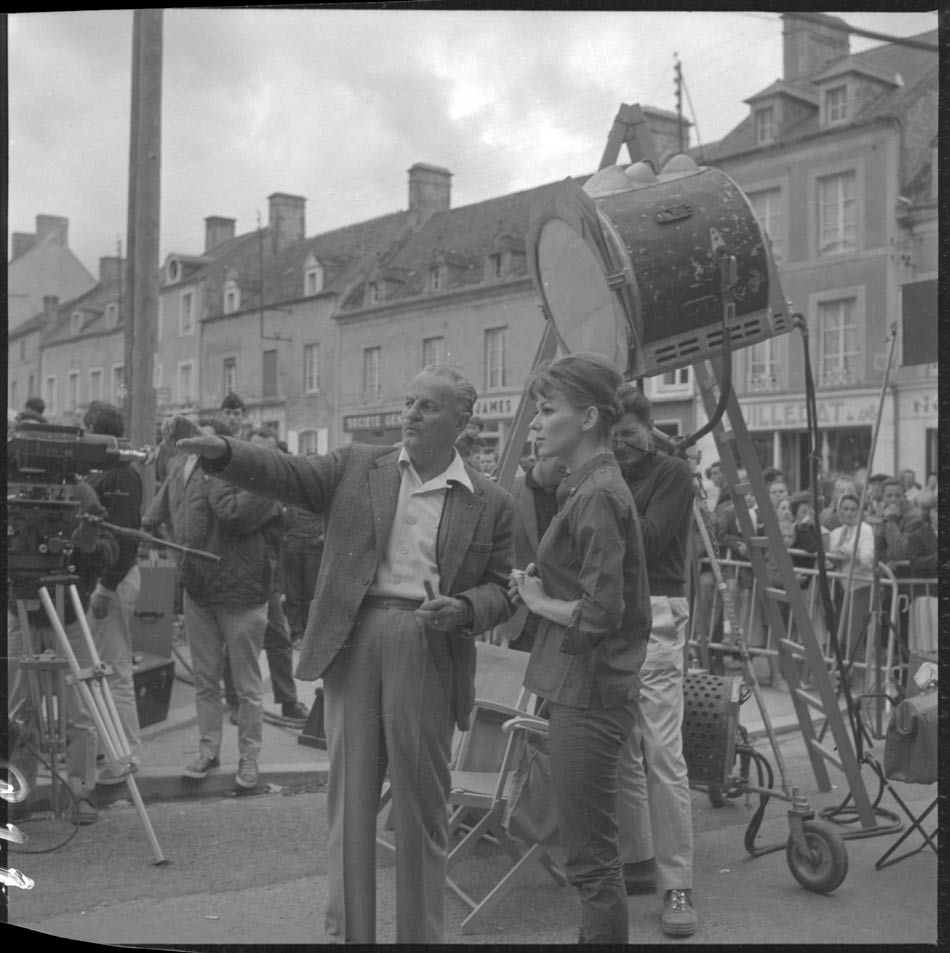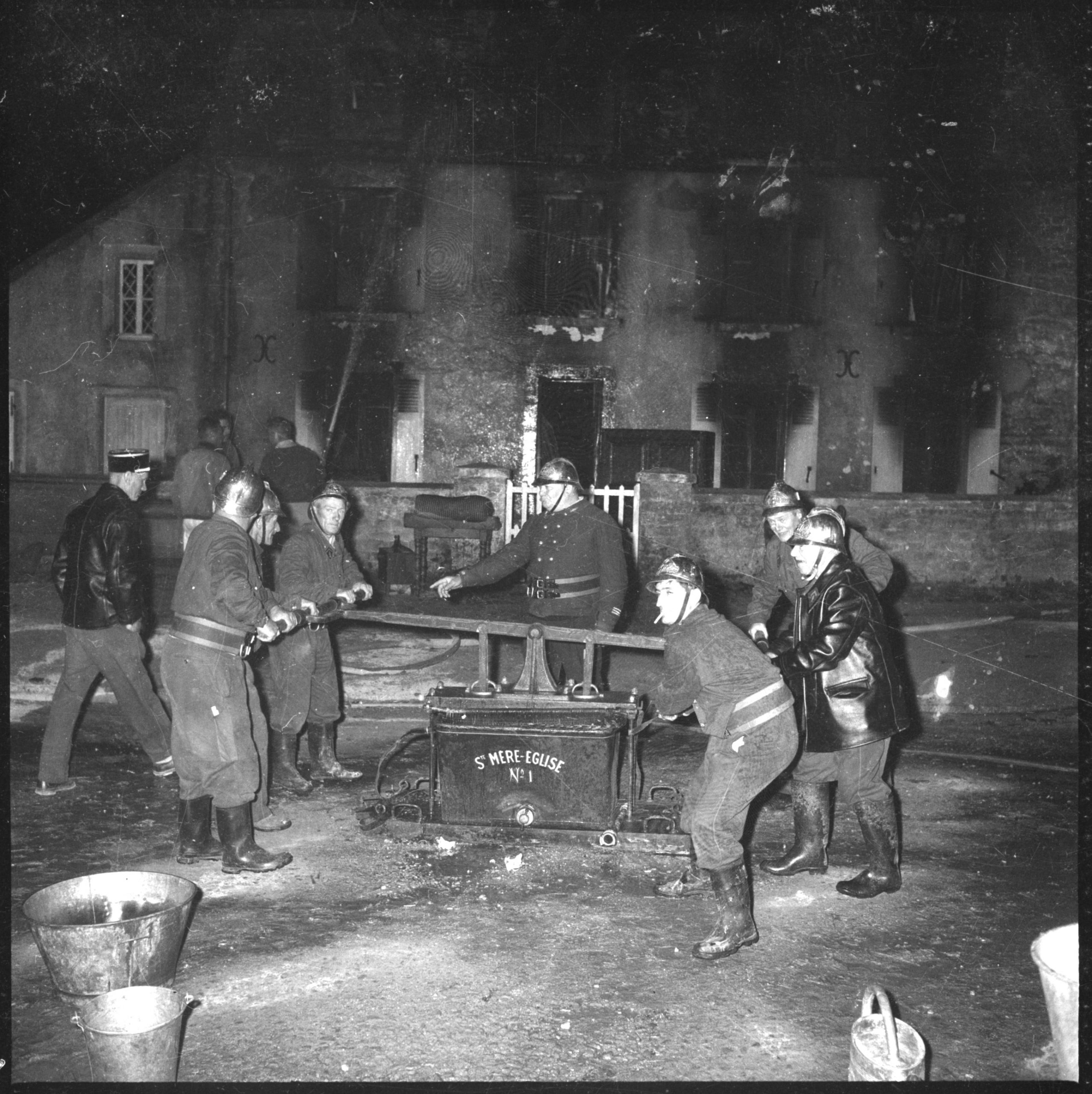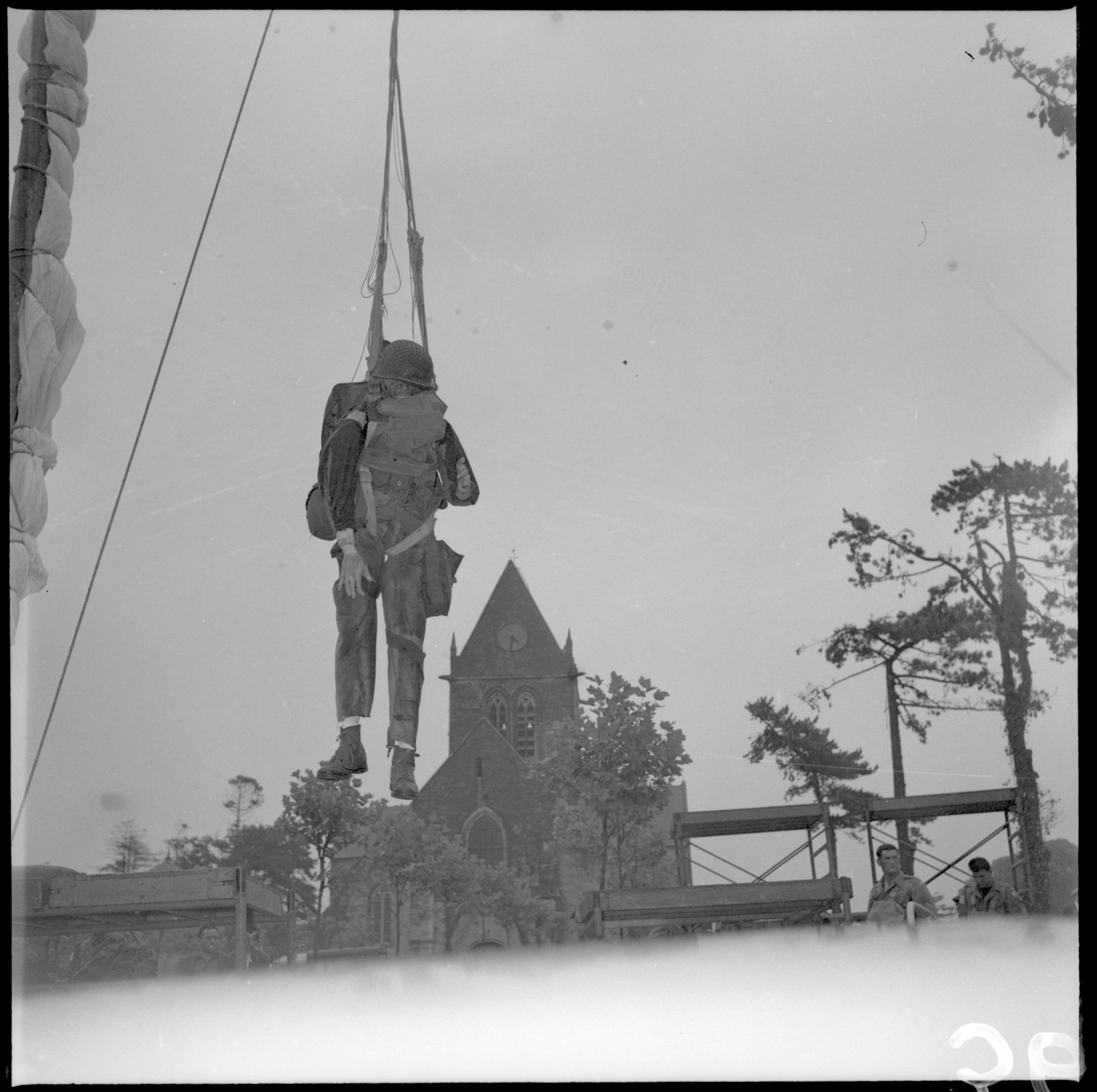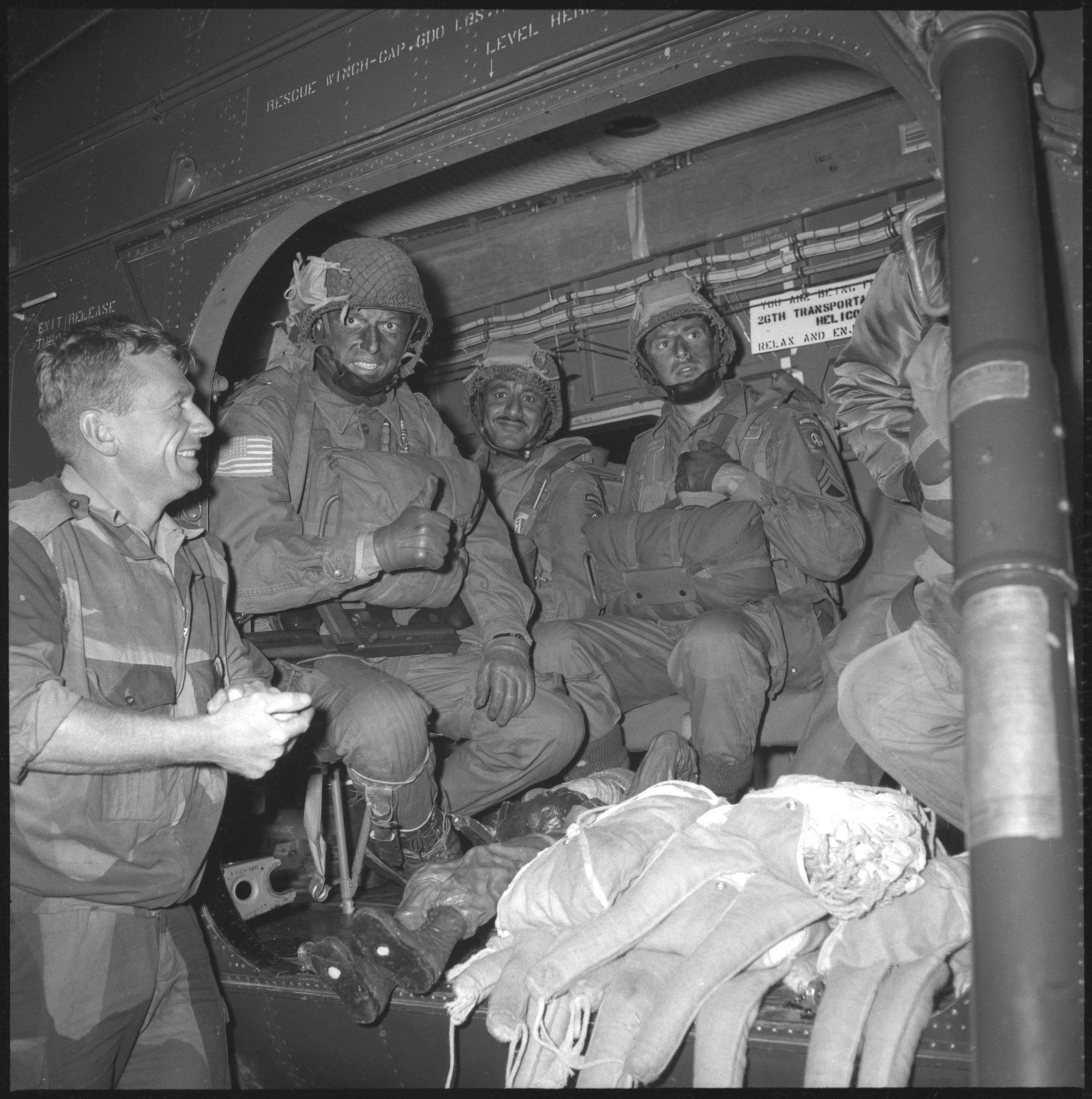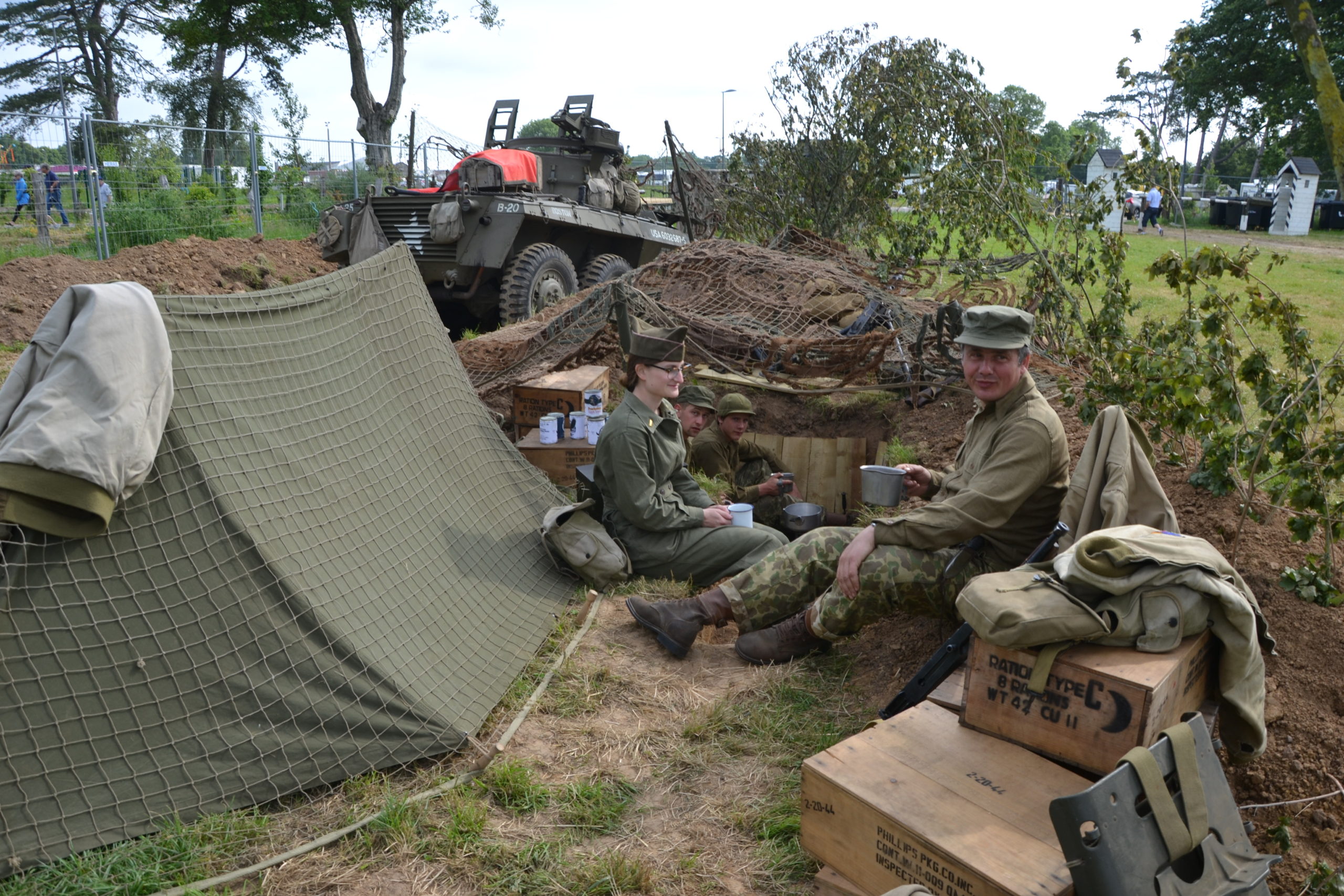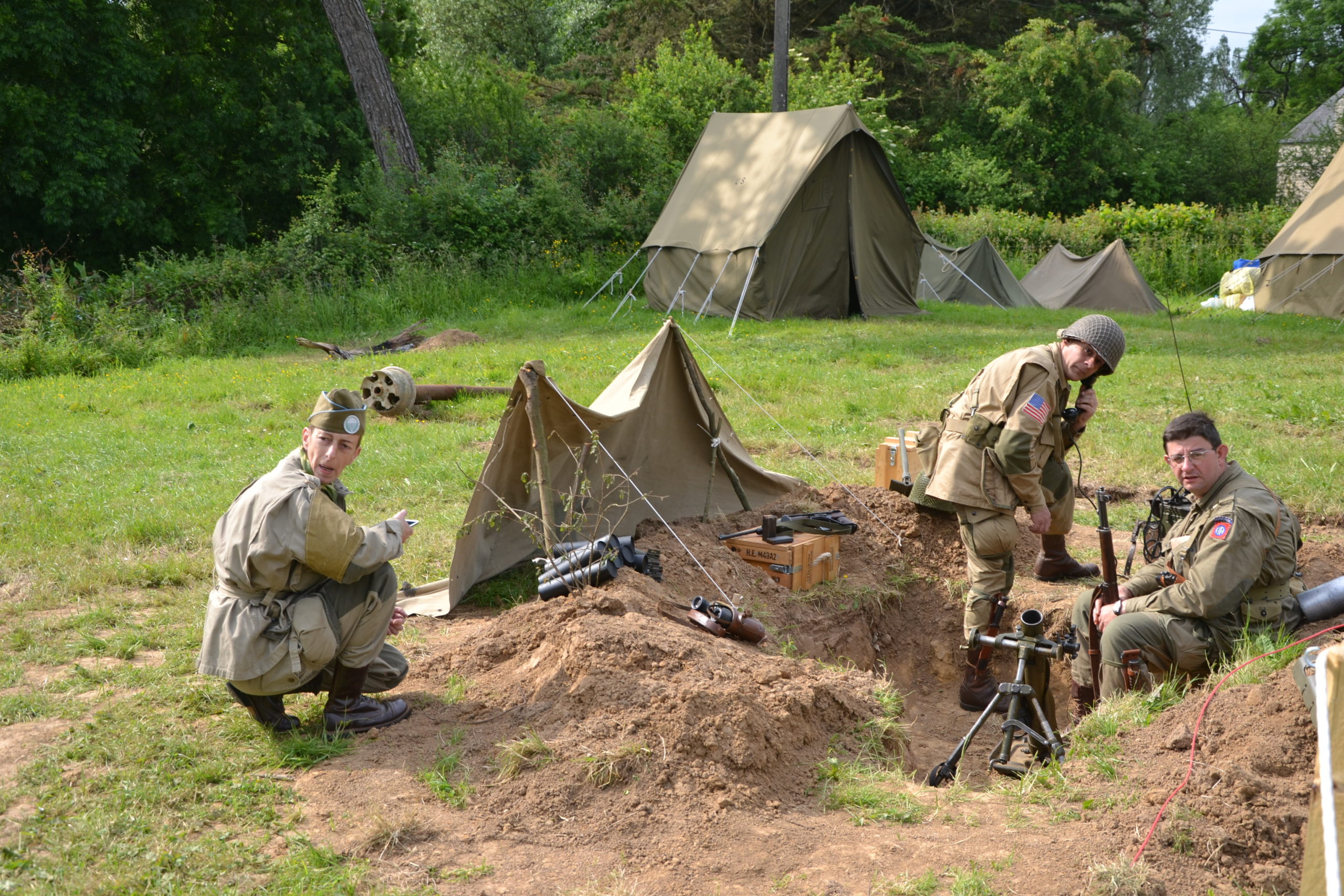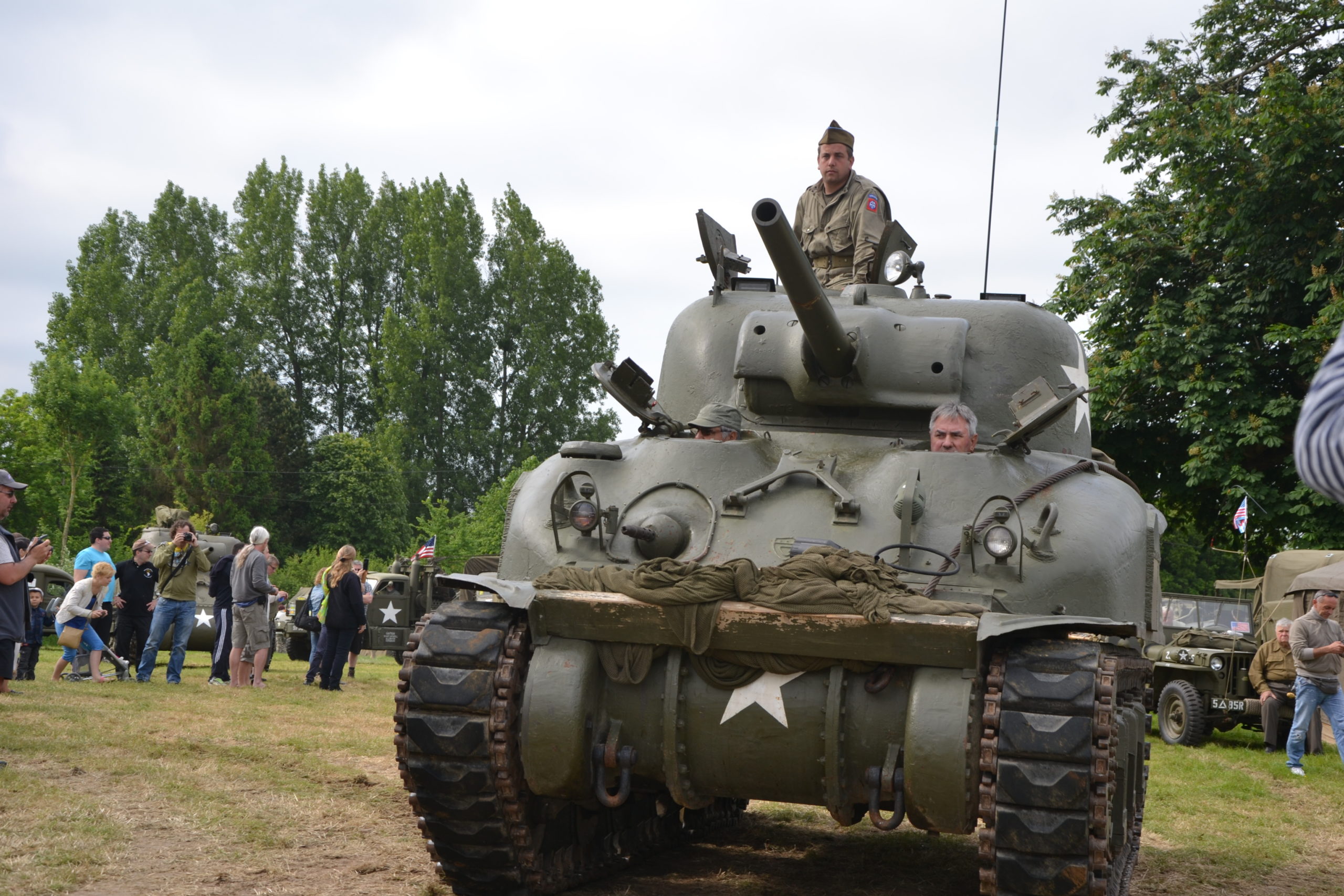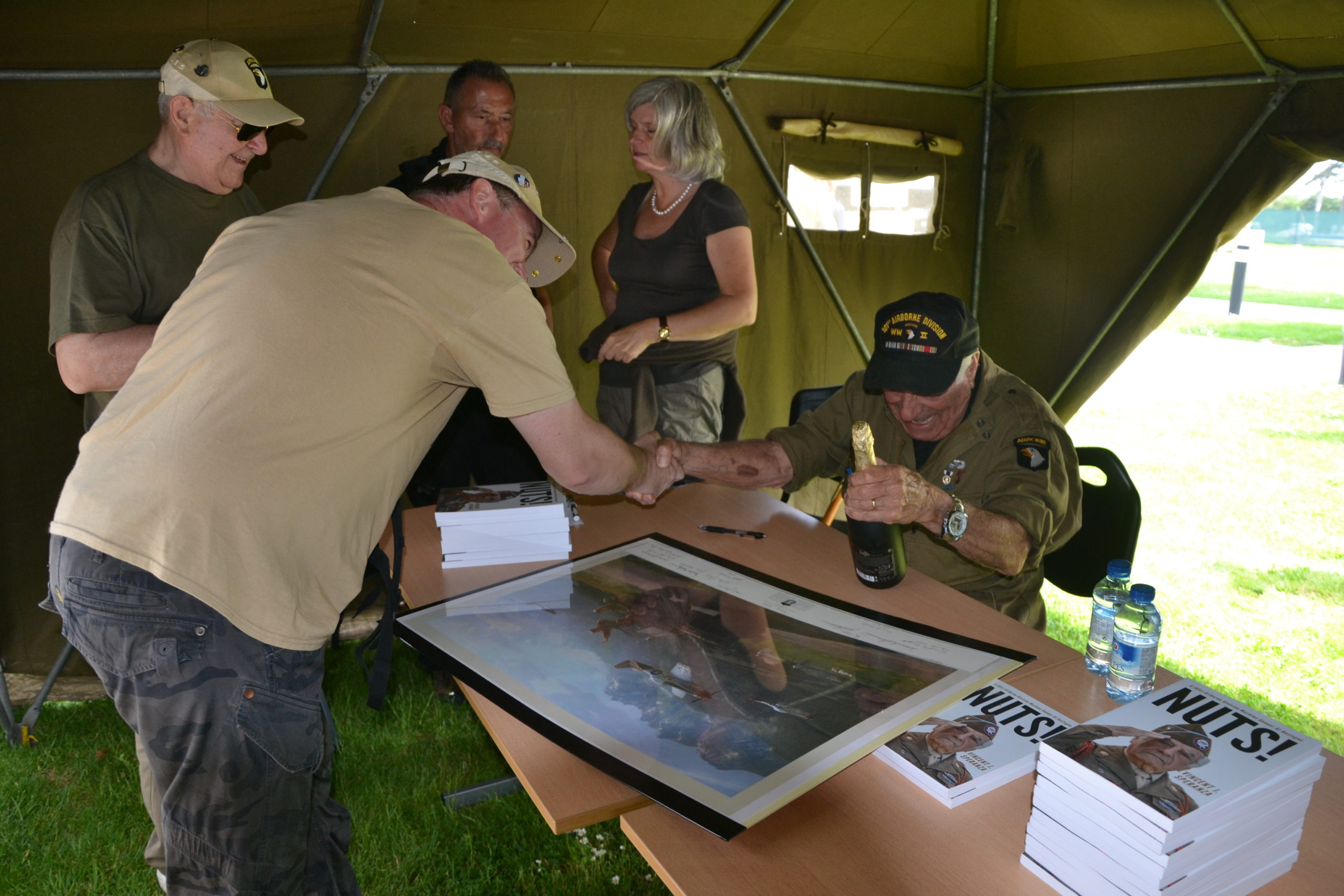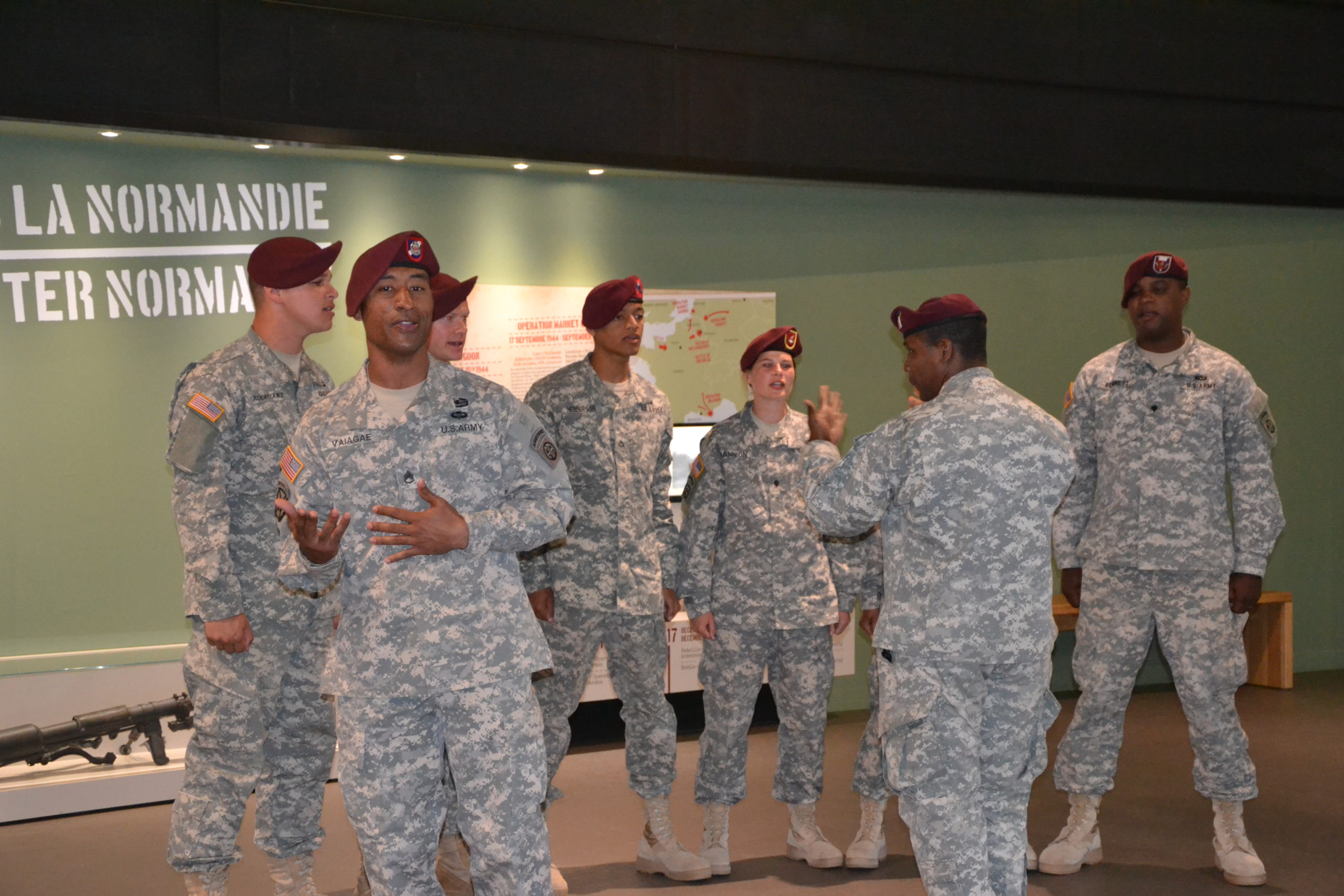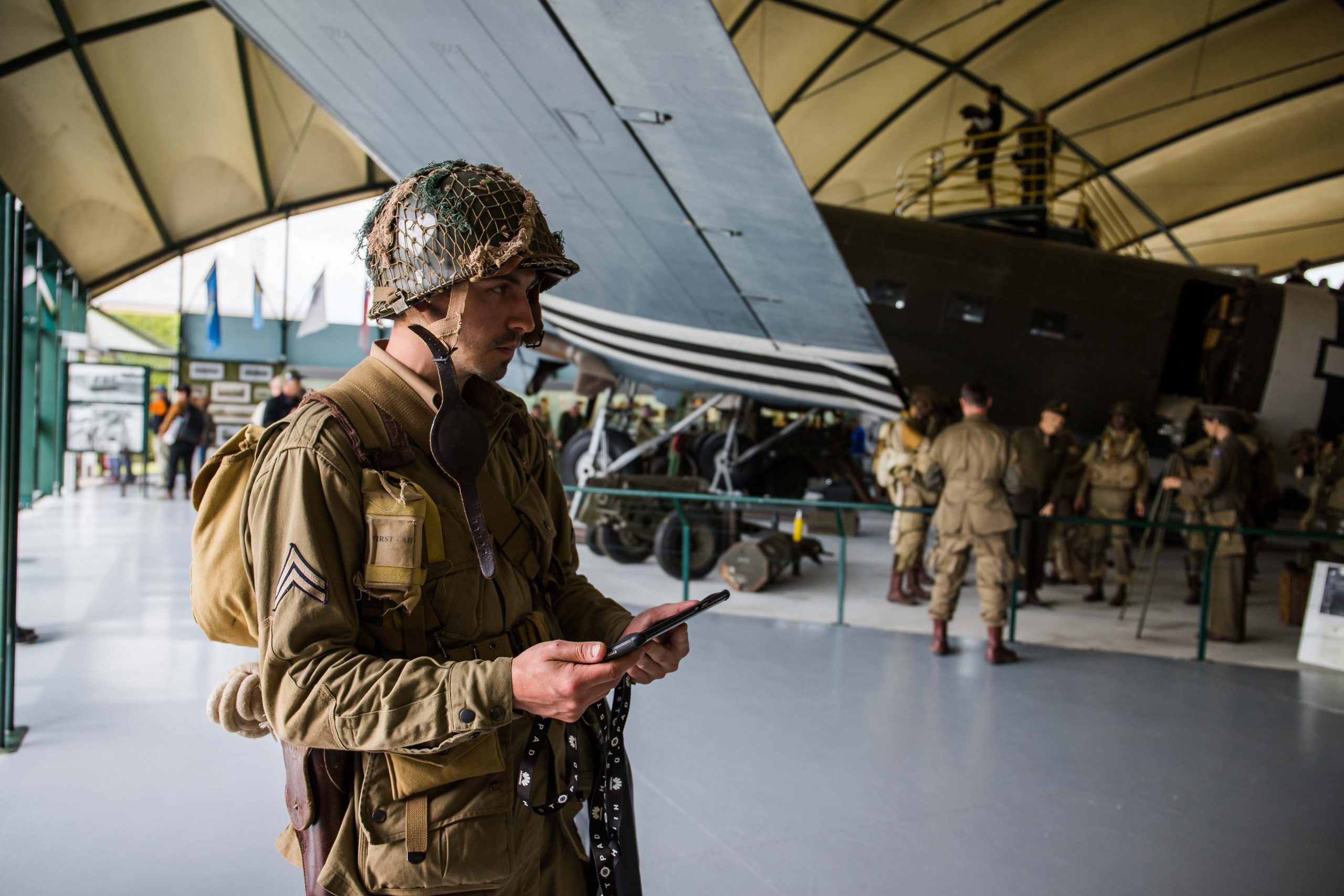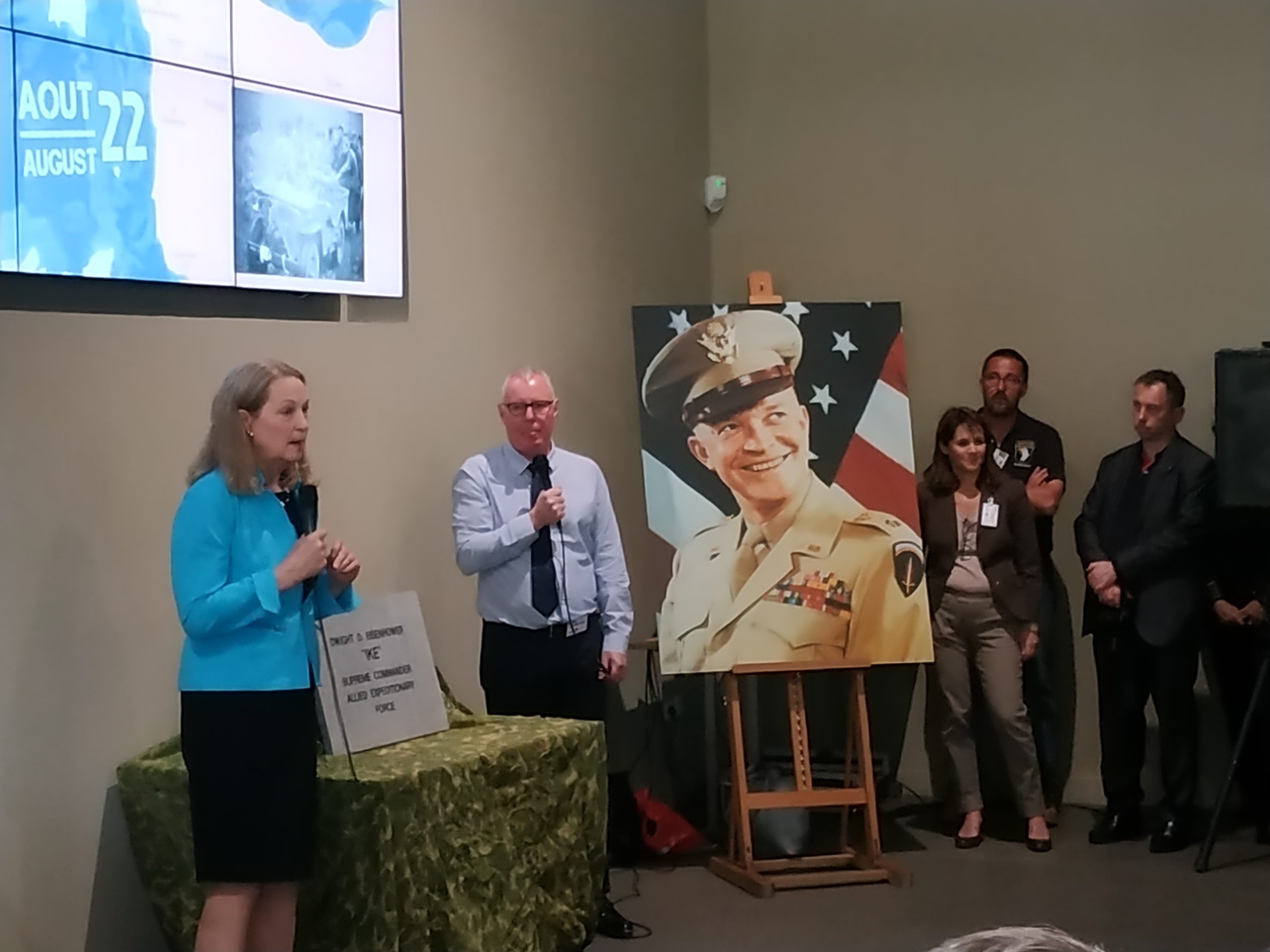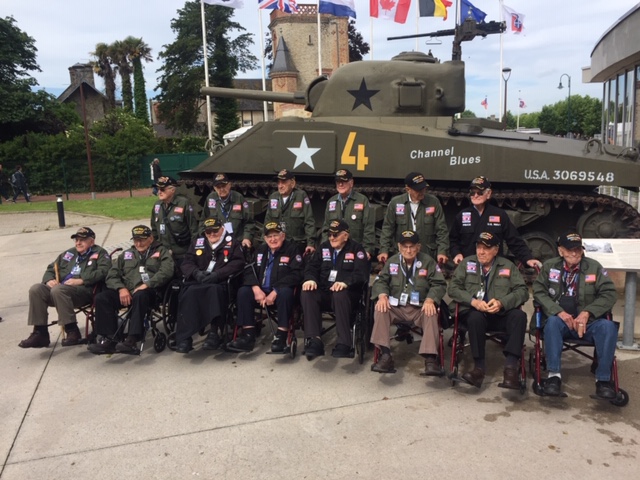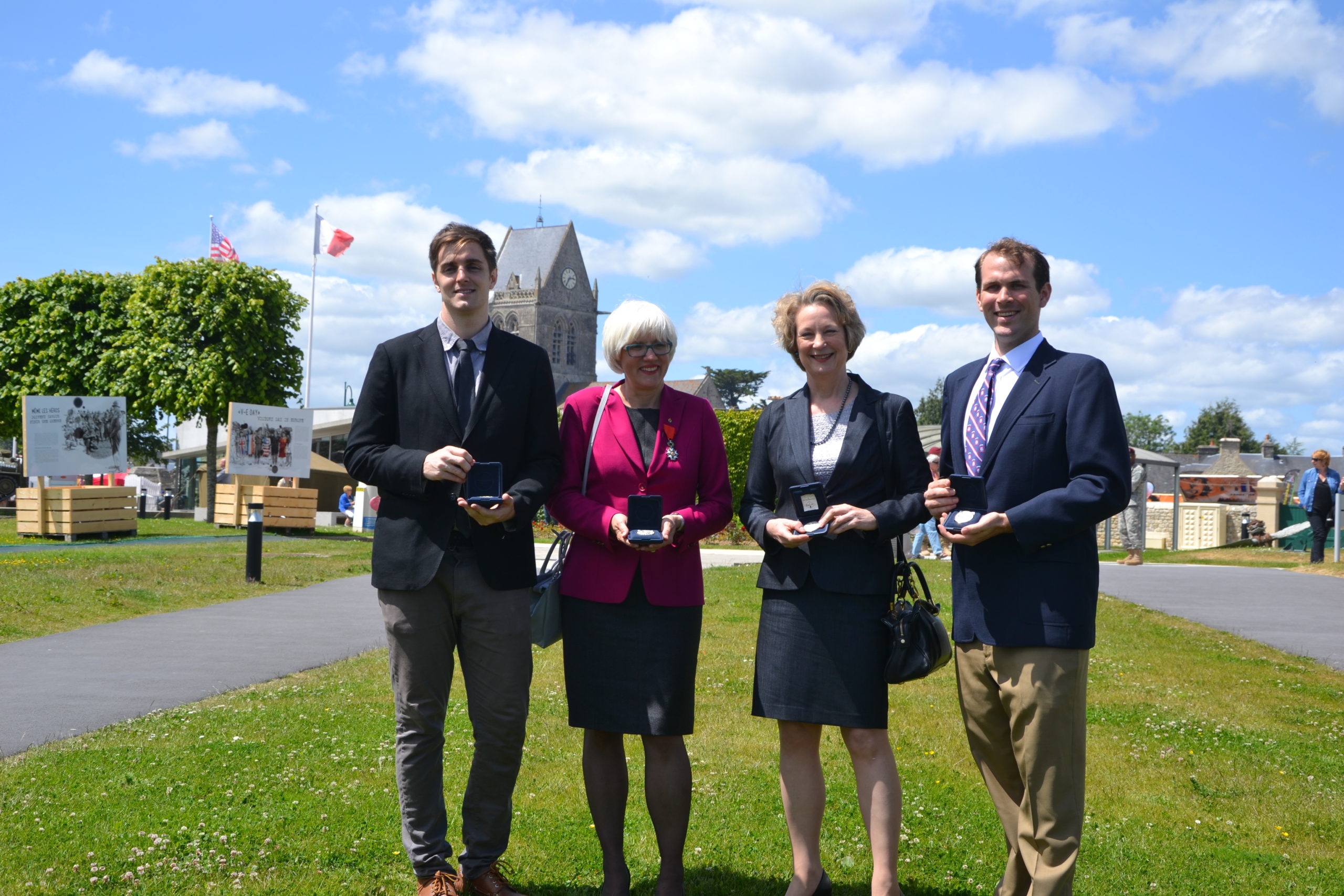Through the sound of tocsin the evening of June 5, 1944, Sainte-Mere-Eglise entered into history. A house behind the church is on fire, it is 11.00 pm. Firemen with the help of locals are trying to control the fire. Since the curfew, they are surrounded by German soldiers at gunpoint.
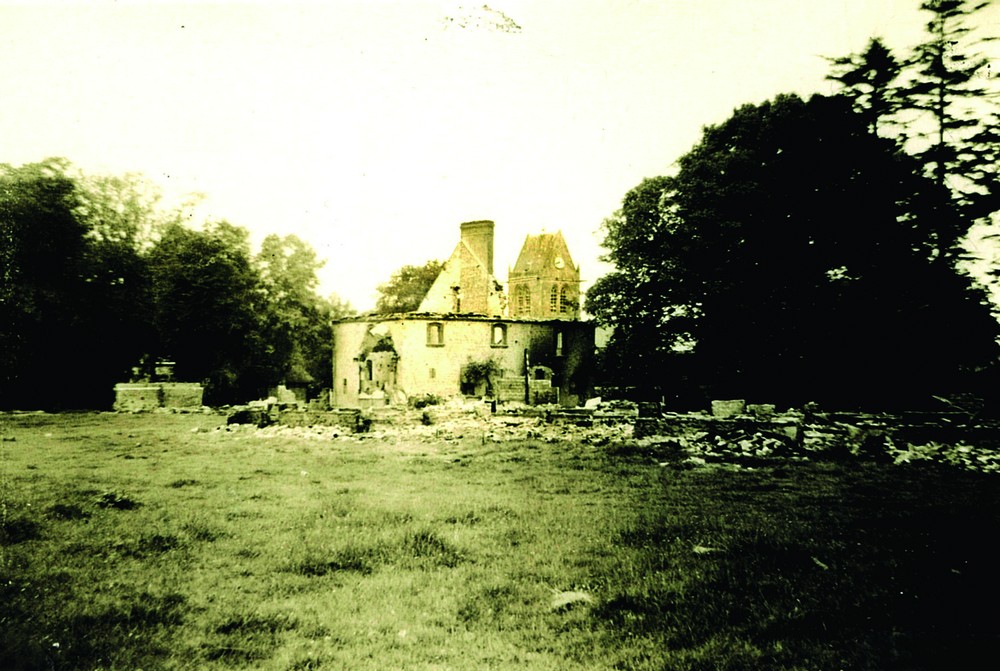
Although Sainte-Mere-Eglise was a drop zone target of the 82nd AB, the first paratroopers to hit the ground of the village belonged to the 101st AB. Several sticks dropped in the village and surrounding area. The “Screaming Eagles”, would participate with the 82nd AB to the liberation of the town.
When several groups of paratroopers were dropping on the town, the Germans quickly realized that this was the beginning of the landings, and after two hours of fighting which killed many Americans, the Germans retreated 2 km to the south in the village of Fauville where the headquarters of their commander was located. The town is taken by the 3/505 under the command of Lieutenant Colonel Edward C. Krause, it is 5:00 am, June 6, 1944.

At dawn attacks against the German start again but by then Sainte Mere Eglise defenses are organized.
In the South, German troops regroup between Turqueville and Fauville and stop the 505th Parachute Infantry Regiment of the 82nd Airborne Division and the town’s shooting with 88mm guns as well as the help of the gliders who land between Fauville and Forges , and thus prevent the troops from the 4th infantry Division coming in from the sea sector of Utah Beach to make a junction with the 82nd AB.
In the North, two successive attempts backed by Stug III tanks, fail only a few yards from the village’s entrance. Paratroopers of 2/505 under command of Lieutenant- Colonel Benjamin H. Vandervoort repel the German attack again with two 57mm guns recovered from gliders.
The provisional cemeteries
In the West, control of the bridges at La Fière and Chef Du Pont crossing the marshes are of paramount importance and the Germans know it. It is a must, indeed, to cut off the Cotentin peninsula and US. troops must borrow from East to West. If the taking of the Chef du Pont bridge is going relatively well, fighting for the capture of La Fière Bridge is another bitter story.
Attacks and counter-attacks again last 3 days but this bridge will never be re-captured and will enable US. troops to continue their progression ahead.
The path of freedom
Sainte-MèreEglise has never forgotten that Freedom came out of the night sky, nor the ultimate price paid by the paratroopers of the 82nd and 101st American Airborne Divisions and by the soldiers who came down by gliders on D-Day. Thousands of soldiers were buried in the three temporary cemeteries between 1944 and 1948, there were around 15 000 graves in these cemeteries. Since then, our collective memory has continued to commemorate them from generation to generation. One just has to walk through our streets and country lanes to see that these events are still very present in daily life.
The longest day
It was during the summer of 1961, in the month of August, that the filming of “The Longest Day” took place, directed and produced by Darryl Zanuck (based on the book by Cornelius Ryan).
The shooting of the film will last 10 months in France with about four production teams, with dozens of international stars: Henry Fonda, John Wayne, Robert Mitchum, Richard Burton…
It will mobilize 23,000 extras and will at that time be considered like the most expensive film in cinema history.
The landing scenes were shot in Corsica and the Ile de Ré ; sites of the Manche and Calvados areas are also used in several major scenes of the film.
Sainte-Mere-Eglise was for its part, the scene of an event which made the film famous worldwide: a US paratrooper, named John Steele, jumped above the square on the night of the 5th to the 6th of June 1944, and remained hung by its parachute on the steeple of the church.
The shooting will last three weeks on site, where inhabitants, and some of them became extras, went alongside actors, technical staff, stuntmen, each one following the others during days and nights.
The film was released in France in September 1962 and will remain one of the greatest war movies in the history of international cinema with 12 million viewers and two Oscars.
The commemorations
Remembrance expresses itself through all the commemorations taking place since 1944 in Sainte Mère Eglise.
Ceremonies, re-enactment camps, concerts, shows and the famous airdrops in la Fière are testimonies of the respect and gratitude towards our Liberators who came and are still coming over in big numbers to participate with us to these anniversaries.


